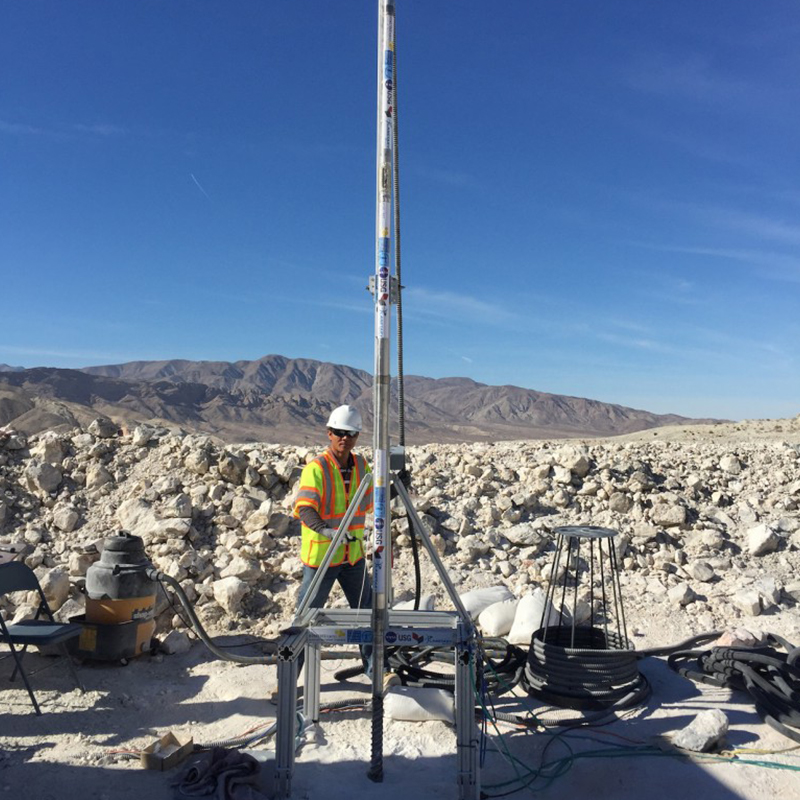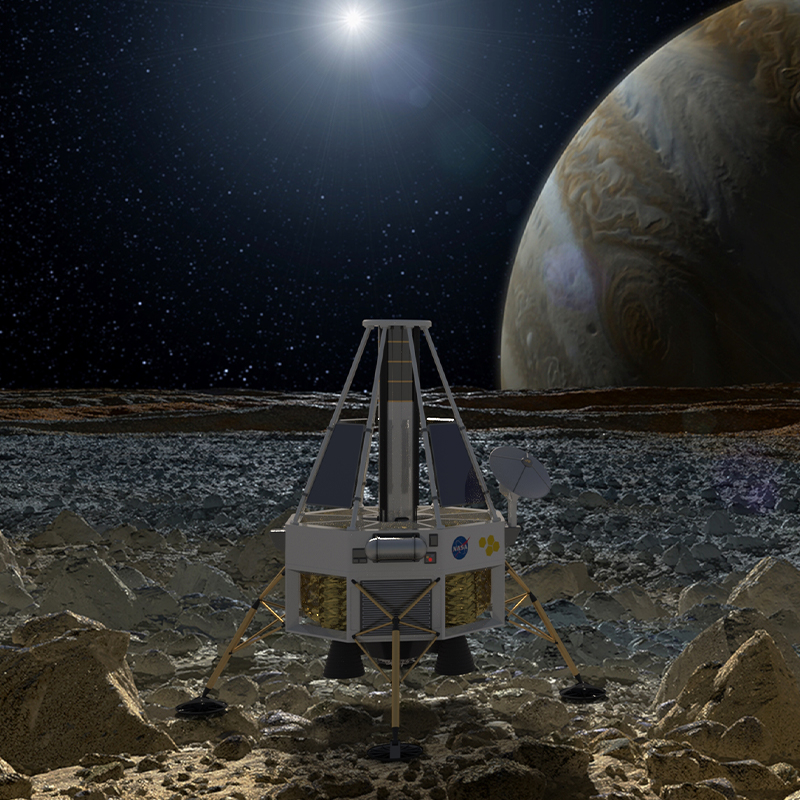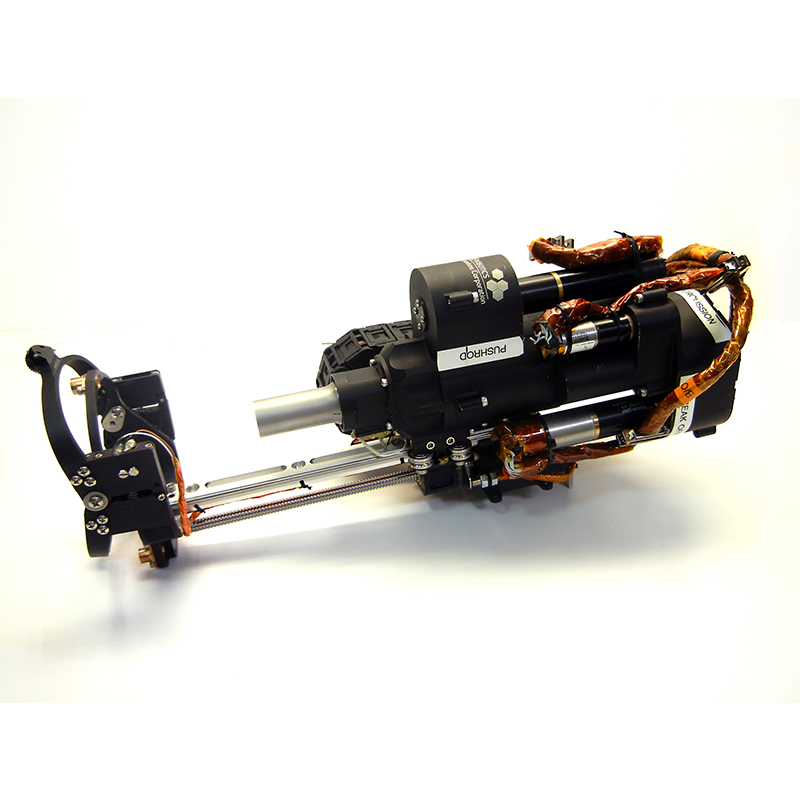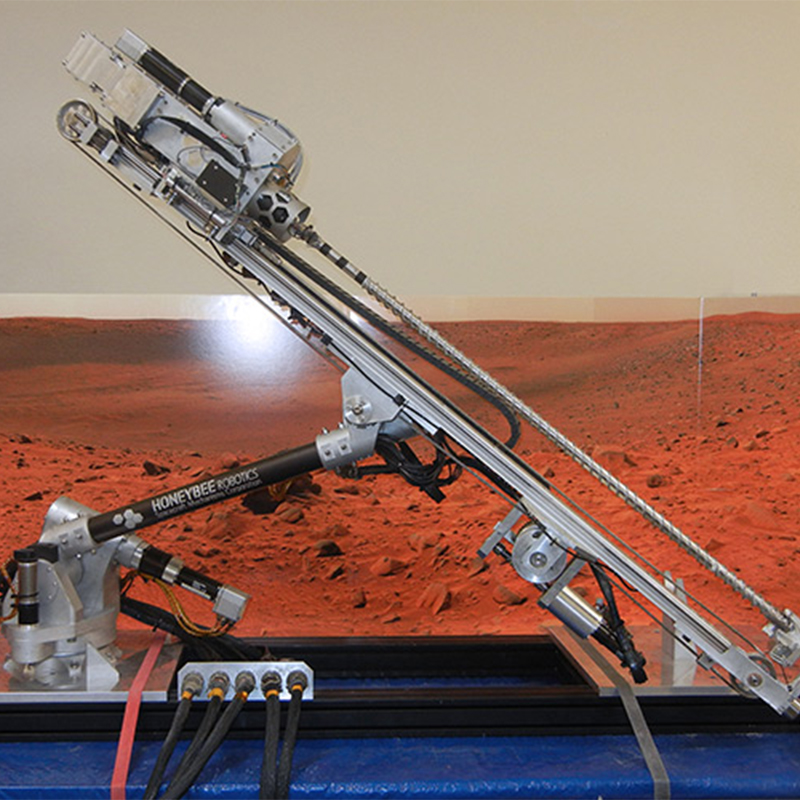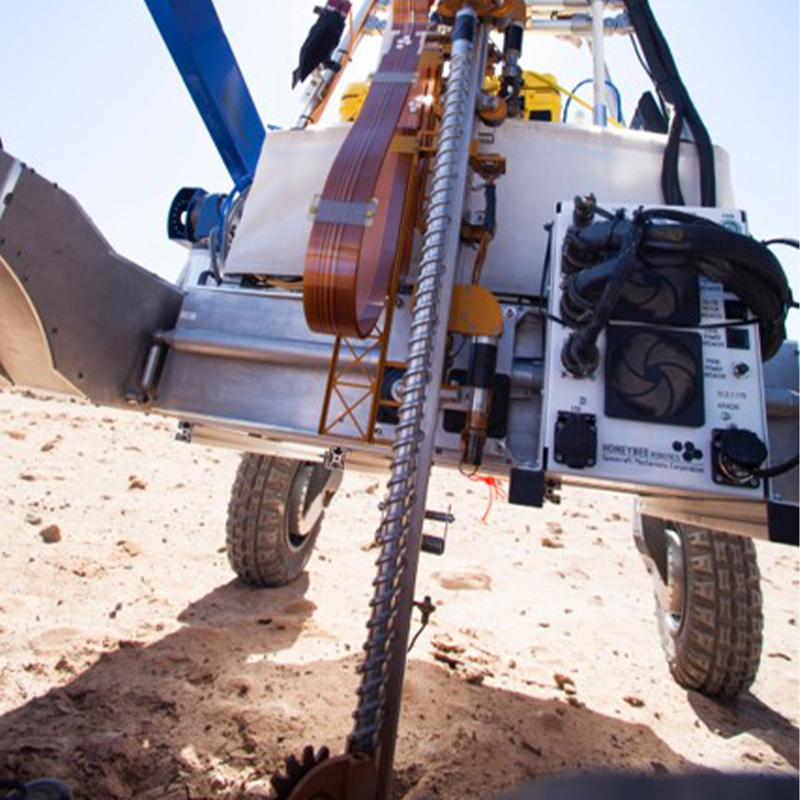
Drills
Honeybee Robotics Exploration Systems has been developing space drilling technologies alongside NASA for 2 decades. We have the ability to drill depth anywhere from millimeters to tens of kilometers. To truly understand our solar system and search for signs of life, we need to look subsurface. To create a sustainable ecosystem for off-Earth survival, we need to look deep. Honeybee has all the tools and know-how to achieve these goals.
Our drills can be split into 3 categories:
Deep drills – Deep planetary drills offer a wealth of information to planetary geologists and astrobiologists. Even more interesting is the ability to reach liquid water by drilling into ocean worlds such as Europa and Enceladus. The Planetary Deep Drill is designed to penetrate up to thousands of meters deep through soil, ice, and other materials on planets and moons of scientific interest. The system consists of a wire-line rotary-hammer drill, whose depth of penetration is limited only by the length of the wire it is suspended from. This enables drilling at great depths, beyond the reach of traditional or telescoping drill architectures. To reach the subsurface ocean, where life may be most prevalent, a probe would need to penetrate the icy formation while moving the excavated material behind it. The Search for Life Using Submersible Heated (SLUSH) drill is a hybrid, thermo-mechanical drill probe system. SLUSH utilizes a mechanical drill to break the formation, and partially melts the fragments to enable the efficient transport of material behind the probe. The resulting slush behaves like liquid despite being partially frozen, enabling a significant reduction of the power required for melting the full volume of ice. Further, because a mechanical approach generates higher penetration rates, SLUSH can reach the ocean in a much shorter time than a pure melt probe. Once SLUSH passes through the hazardous cryogenic ice, it could use a purely thermal approach to melt through the warmer ice without the need for mechanical cutting.
Medium drills – The Regolith and Ice Drill for Exploration of New Terrains (TRIDENT) is designed for early space prospecting efforts to gather water from the Moon. It can capture and evaluate volatile species, including water, from cryogenic solids located within the top meter of lunar regolith. TRIDENT captures cuttings from a depth of up to 1 meter and transfers them to an oven, where the water bakes off and can be captured for further use. The drill uses a “bite” sampling approach where samples are captured in ~10 cm intervals. This allows determination of water content as a function of depth – important data for future mining efforts. TRIDENT will fly to the Moon as part of VIPER in 2023.
Planetary drills exploring 1-2 meters subsurface are at the heart of many current Mars drilling concepts. The Icebreaker drill (a modified version of TRIDENT) is a leading technology for future missions seeking subsurface biological signatures and enhanced geotechnical analysis from a compact platform. The Icebreaker drill is designed to reach rock and soil samples from depths less affected by cosmic radiation, providing insight into geochemistry and the habitability of environments on Mars or other celestial bodies.
Small drills – The Nano Drill is a novel rotary percussive coring drill that weighs less than 1 kg, designed for use by both robotic platforms and astronauts. The drill uses a novel method of core or powder acquisition suitable for acquiring samples of rock core, icy-soil or loose regolith. The Nano Drill is a simple two-actuator drilling system designed to capture and retain 0.75-cm-diameter cores, ejecting rock cores from the hollow bit using the drill percussive system. For future robotic and human missions to Mars, the moon, asteroids, and other planetary bodies, acquiring core samples (as opposed to scooped samples or collected drill cuttings) are of particular interest. The Nano Drill offers a small, reliable tool to provide such capabilities.

